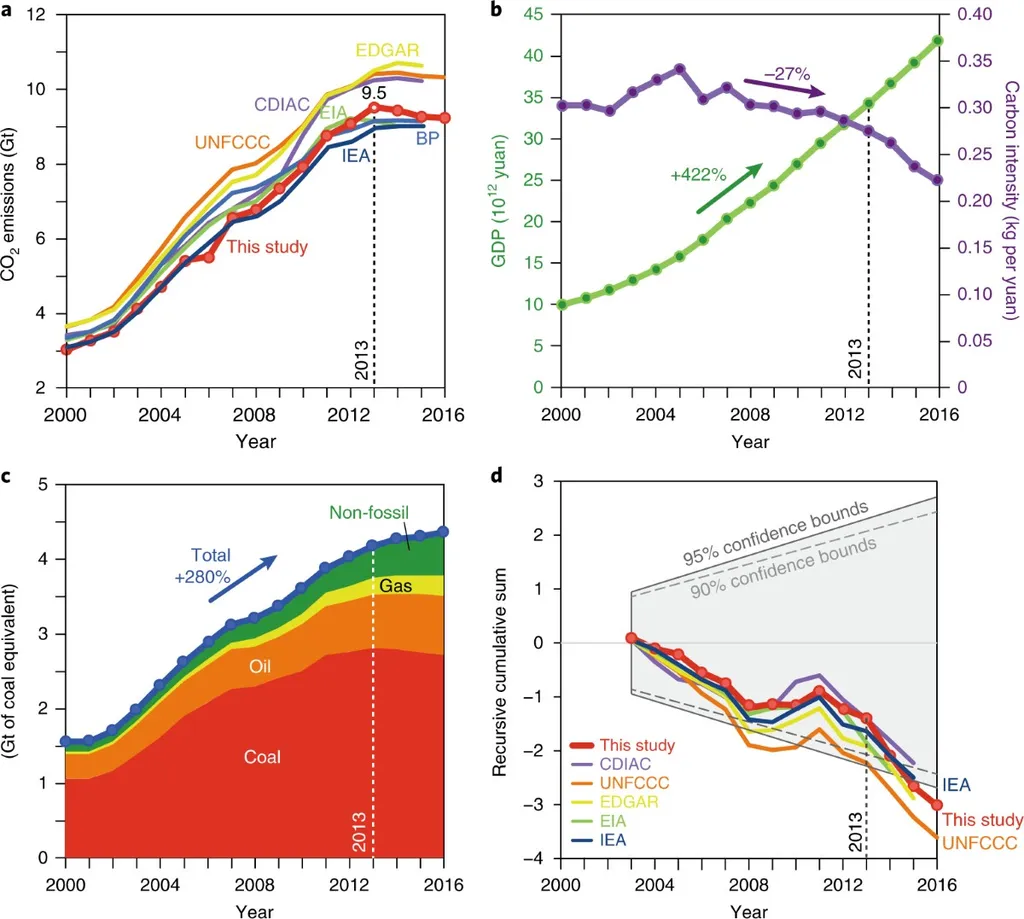In a significant stride towards harmonizing low-carbon goals with the operational complexities of integrated energy systems (IES), researchers have developed a novel optimization model that could reshape the energy sector’s approach to carbon management and operational resilience. Published in *Electric Power* (Zhongguo dianli), the study led by Junxiang Zhao from the College of Electrical and New Energy at China Three Gorges University introduces a two-stage robust optimization model that integrates Oxy-fuel combustion carbon capture (OXYCC), hydrogen blending, and a reward-penalty tiered carbon trading mechanism.
The research addresses a critical challenge in the energy sector: achieving low-carbon and robust scheduling amidst the uncertainties of wind power and load fluctuations. “The dual carbon goals—carbon peaking and carbon neutrality—demand innovative solutions that not only reduce emissions but also ensure stable and cost-effective operations,” Zhao explains. The proposed model aims to strike this delicate balance, offering a coordinated optimization approach that enhances the system’s scheduling feasibility and operational stability under fluctuating conditions.
At the heart of the model is the integration of OXYCC technology, which captures carbon emissions from combustion processes, and hydrogen blending, which reduces the carbon intensity of natural gas. The reward-penalty tiered carbon trading mechanism further incentivizes low-carbon practices by rewarding reductions and penalizing excess emissions. This multi-faceted approach not only cuts carbon emissions by nearly 30% but also reduces system operational costs by 16.11%, according to simulation results.
The two-stage robust optimization approach employed in the study is designed to handle uncertainties effectively. The first stage focuses on planning under uncertainty, while the second stage adjusts the plan based on realized conditions. This iterative process ensures that the system can adapt to fluctuations in wind power and load, maintaining stability and efficiency. To enhance computational efficiency, the researchers employed the column-and-constraint generation (C&CG) algorithm, which significantly improves the model’s performance.
The implications of this research for the energy sector are profound. As the world transitions towards cleaner energy sources, the need for robust and low-carbon scheduling models becomes increasingly urgent. “This model provides a practical tool for energy providers to navigate the complexities of integrating renewable energy sources while meeting stringent carbon reduction targets,” Zhao notes. The study’s findings could influence policy decisions, regulatory frameworks, and commercial strategies, driving the energy sector towards a more sustainable and resilient future.
The research also highlights the importance of technological innovation in achieving low-carbon goals. By integrating OXYCC and hydrogen blending, the model demonstrates the potential of advanced technologies to transform the energy landscape. The reward-penalty tiered carbon trading mechanism further emphasizes the role of market-based incentives in promoting sustainable practices.
As the energy sector continues to evolve, the insights gained from this study could shape future developments in integrated energy systems. The model’s ability to reduce carbon emissions and operational costs while maintaining stability under fluctuating conditions sets a new benchmark for low-carbon scheduling. “This research is a step towards a more sustainable and resilient energy future,” Zhao concludes, underscoring the transformative potential of the proposed model.
In an era where the dual carbon goals are steadily advancing, this study offers a compelling example of how innovation and robust optimization can pave the way for a cleaner, more efficient energy sector.

